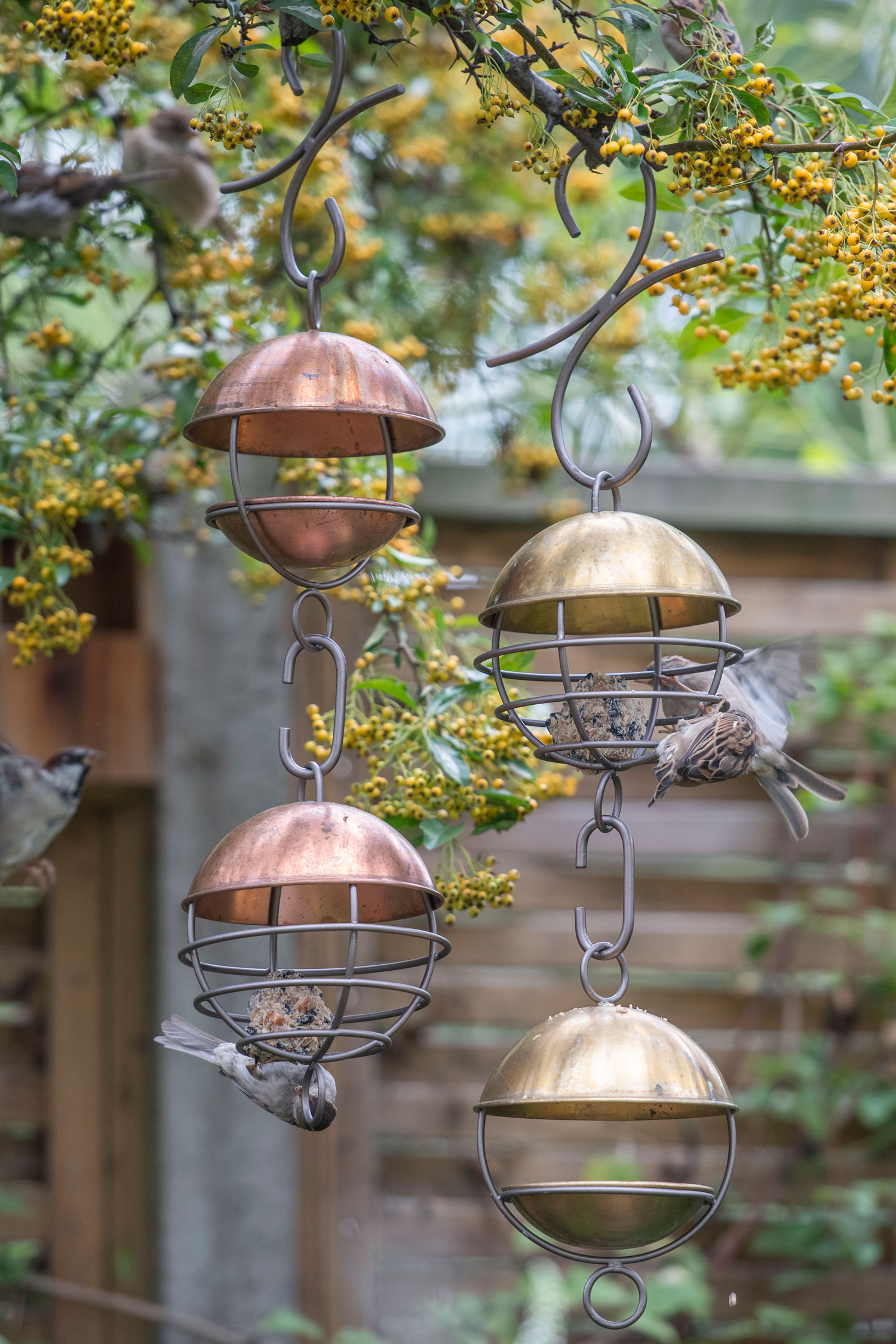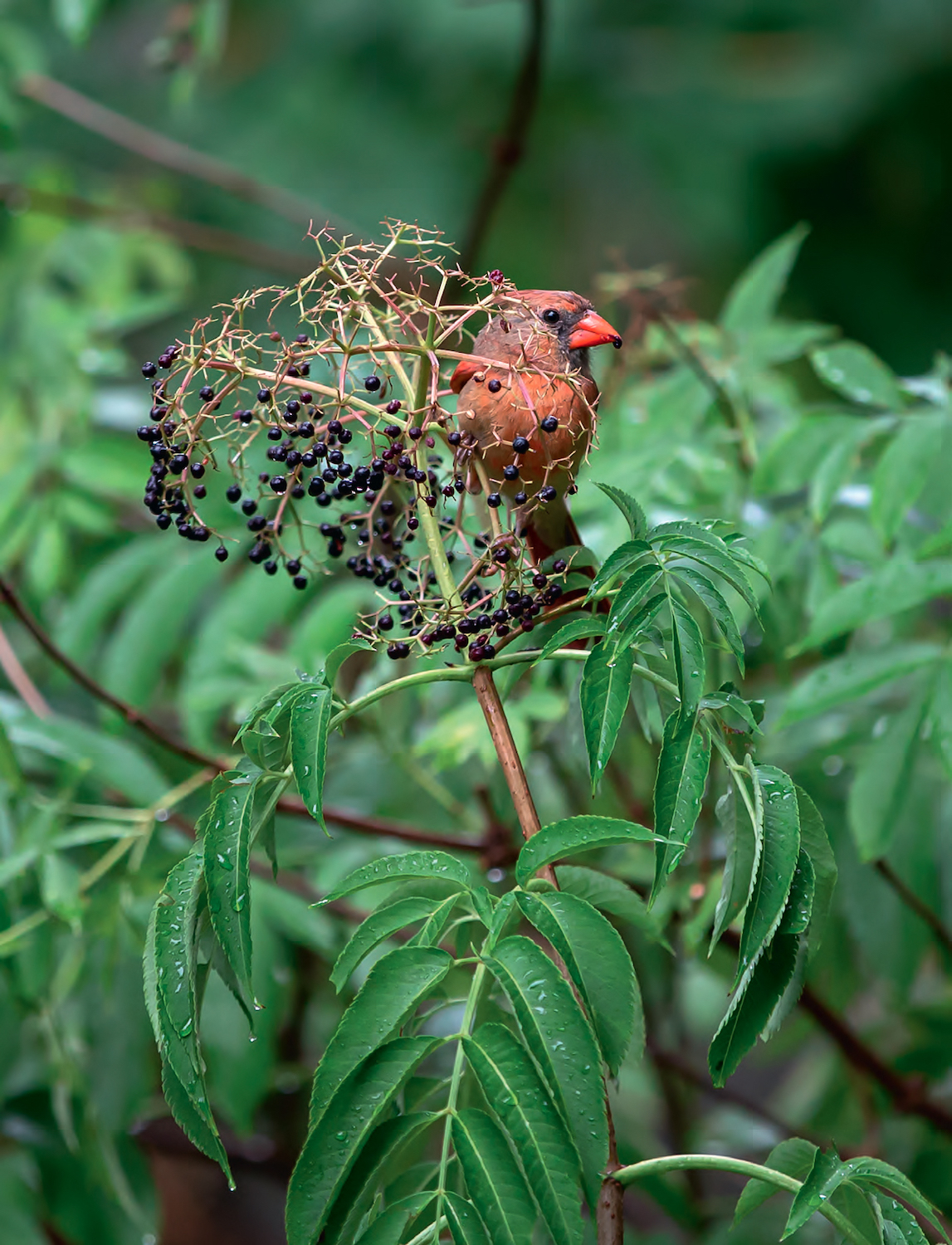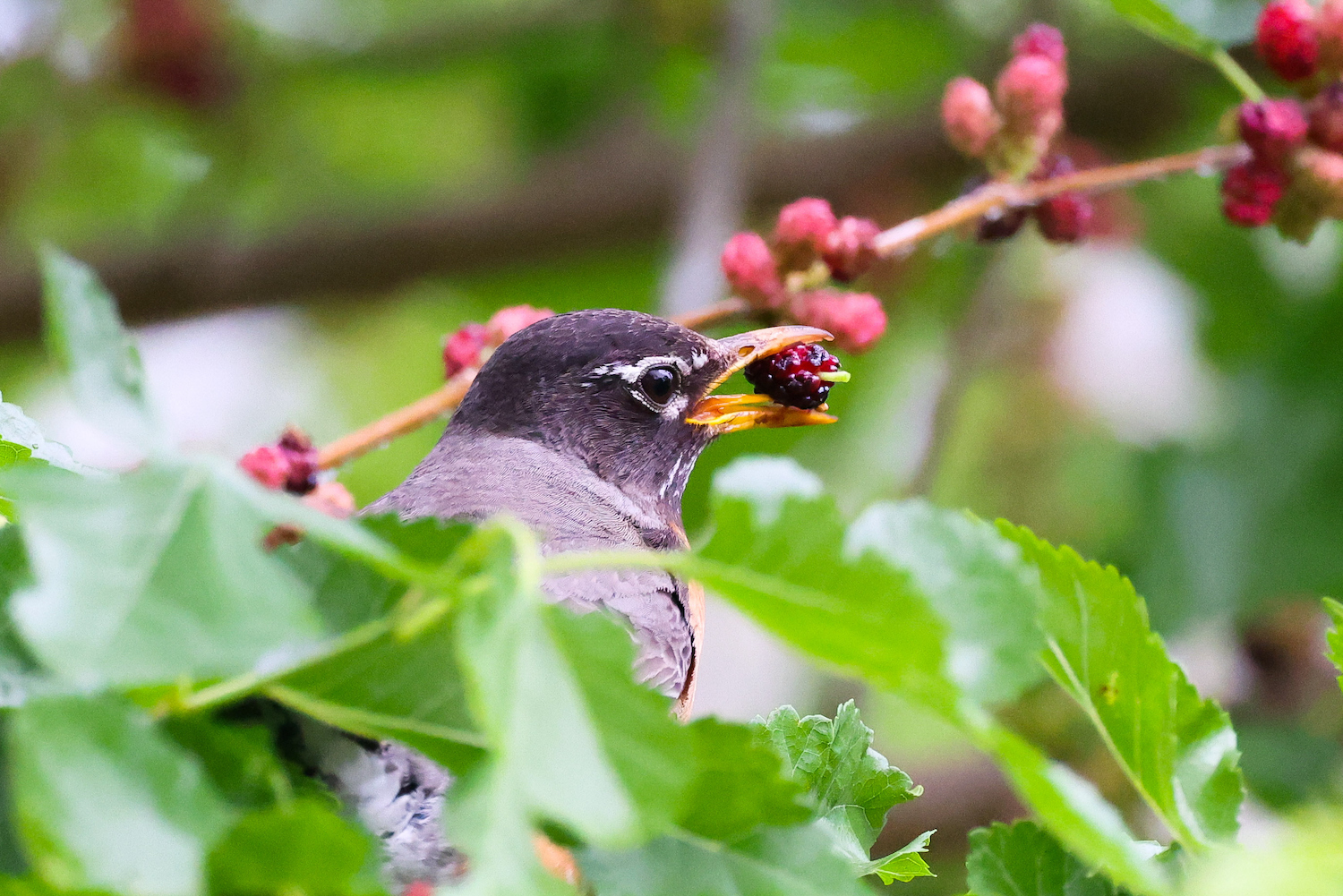"It Makes Your Backyard More Uplifting" — Getting This Trick Right Will Bring So Many More Birds to Your Yard
If you know what the best food for birds is then you'll be able to turn your backyard into an enriching space that is full of life and natural beauty at its best

Buying seed and diligently topping up feeders is a wonderful way to attract birds to your garden. But what are the best foods for birds?
Different birds eat different food, so what's on offer will influence who visits. Choosing well will ensure our feathered friends are fed and nourished, while you sit back and enjoy the spectacle happening in your backyard.
'Many people get started birdwatching or helping birds by adding bird feeders to their outdoor spaces, which is a great first step,' says Jen McGuinness, author of Bird-Friendly Gardening . 'But this is only one of the many ways you can make a difference for birds.'
We've previously looked at the best trees for songbirds, but Jen has an approach that is much easier and faster to do, and it makes your backyard so much more uplifiting if you fill it with birdlife. 'Your private property can offer much more sustenance for songbirds than just sunflower seed in a hopper feeder. Using your garden, front yard, median strip, and even apartment balcony to create pockets of habitats that provide food, cover, and water can positively impact birds year-round.'
What are the best foods for birds?
1. Native plants

Trees, shrubs and plants that have grown in your region for centuries are best for feeding birds, due to the insects they attract. So check what's native to your area.
'Native plant species in particular play an important role in the survival of songbirds that reside year-long in the garden and for those passing through during migration,' says Jen McGuinness. 'Native plants do a far better job of sustaining insect and bird life than exotic non-native plants.
'Many of the insects that birds use to rear their young are caterpillar. Entomologist Doug Tallamy often shares how many caterpillars are needed to raise one family of Black-capped Chickadees. It’s between 6,000-7,000.
'Plants in the US are considered native if they occurred prior to European colonization. It has evolved with the wildlife and insects in the area, and sometimes it needs specific insects for pollination or birds to spread seeds.'
The Livingetc newsletters are your inside source for what’s shaping interiors now - and what’s next. Discover trend forecasts, smart style ideas, and curated shopping inspiration that brings design to life. Subscribe today and stay ahead of the curve.
2. Sunflower seeds

The simplest way to support songbirds and lure them to your yard is to fill a feeder with sunflower seeds. This will help sustain birds in the winter, when food is scarce.
'Sunflower seed is popular with Northern Cardinals, Tufted Titmice, American Goldfinches, and other songbirds,' says Jen McGuinness. 'However, a fun way to offer bird seed for the colder season is to grow your own.
'Sunflower seeds are large and easy to handle, so planting the seeds can be a fun activity for children to participate in. For sunflowers being grown as birdseed, skip the seed varieties that are labeled “pollenless“—these will not produce seed. Once the danger of frost has passed in your growing region, seeds can be directly sown into the warm soil (either in a raised bed, directly into the ground, or in a large container). Follow the seed packet instructions when planting.
'On average, they bloom between eleven and eighteen weeks from sowing the seeds. Birds, mainly goldfinches, will find the sunflowers and begin feasting as soon as the seeds begin to ripen. This is a wonderful opportunity to observe the birds as they harvest ripened seed from each flower.'
3. Bushes with berries

Birds love berries as much–or even more–than we do, particularly species such as finches, wrens, kinglets, chickadees, swallows and many more. So grow some crops just for birds.
'Many of the fruits that we enjoy eating, are also attractive to songbirds,' says Jen. 'While the majority of plants produce fruit during the warmer season, Highbush Cranberry will hold on to the fruit into the winter, and won’t be palatable to birds until it has been frozen and thawed a few times.
'Consider incorporating both Highbush Blueberry and Lowbush Blueberry into your garden, which will produce food at different times during the growing season.
'If adding a large American Black Elderberry is not possible in your space, consider adding the shorter growing Black Chokeberry instead. This shrub will not get as tall as the elderberry and will hold on to the fruit longer throughout the season.
'Black Chokeberry provides visual interest in the garden and food for the birds. They have a bitter flavor and are high in Vitamin C—a good source of energy for birds when food becomes scarce.
'American Black Elderberry is attractive to a variety of birds, including robins and House Finches. 'Elderberries and blackberries will also attract Rose-breasted and Black-headed Grosbeaks. Once the birds discover the food source, they will visit multiple times a day.
'If you also want a share of the ripening fruit, it’s recommended to plant extra. Bird netting for blueberry shrubs works successfully when it is correctly mounted to a frame or cage that surrounds the plants.
'Draping the netting over the shrub itself can lead to birds getting their feet tangled, and is not recommended.'
4. Sugar water

Hummingbirds feed differently to most other types of bird, so choose a nectar feeder to attract these charming visitors. If you don't have any of the best flowers for hummingbirds, don't worry! You can attract them a different way.
'When it comes to the food inside the hummingbird feeder, stay away from reddening chemicals and food dye,' says Jen. 'You can make your own “nectar” solution by using a 1:4 ratio of refined white sugar to tap water. (Such as ¼ cup of sugar in 1 cup of water.)
'Do not substitute the white sugar with honey, corn syrup, powdered sugar or raw, unprocessed sugars to make hummingbird food. These other sugars can be harmful to hummingbirds because they can ferment more quickly.
'Bring the solution to a boil and let it cool before filling the feeder. You can make a larger batch and refrigerate the extra solution. However, extra solution should be discarded if it appears the sugar water has “turned,” which means that the sugar solution is looking cloudy.
'Hummingbird nectar feeders come with specific cleaning requirements to keep birds healthy,' continues Jen. 'In cooler weather, cleaning the feeder once a week is recommended. In hot weather, the feeder should be emptied and cleaned at least twice per week.' This hummingbird feeder from Target is ideal.
'In both cases, the food should be discarded and replaced. If the feeder is emptied very quickly in hot weather, clean the feeder every time it is empty. Cleaning with hot tap water works well, or use a weak vinegar solution.
'Avoid using dish soaps, as this can leave harmful residue in the feeder. A small brush can help clean the feeding ports to ensure there is no residual mold that has built up inside. Moldy sugar water can be harmful and even fatal to hummingbirds.'
5. Suet

'Suet feeders will attract woodpeckers to your garden, such as Red-Headed Woodpeckers and Downy Woodpeckers, along with other small songbirds, such as Mountain Chickadees, Bushtits, and Oak Titmice,' says Jen.
'Often supplied in the colder season as a source of fat reserves for birds, suet can also be placed out in the summer as long as it is a no-melt variety. For days when the temperature is 85°F to 90°F or higher, omit suet from the food offerings to prevent suet from turning rancid.'
6. Nyjer seed

As well as food for attracting finches, Nyjer seed (sold for $15.38 at Amazon) is a good option if you want to stop squirrels going for your bird feeder. The fluffy raiders aren't keen on the taste and the feeders are tricky for them to access. The feeders are also inaccessible to 'bully birds, like magpies.
'These skinny, tubular feeders have small perches that goldfinches can easily perch on to feed, but they are too small for larger birds,' explains Jen.
7. Fruit
Birds will eat apples, pears, apricots, plums and other fruits fallen from trees. Have a look at our guide to fruit trees you can grow in pots for more inspo here. However specialist fruit feeders can also be filled to attract birds all year round.
'These fruit feeders feature prongs to hold slices of oranges or dishes filled with grape jelly to lure orioles, tanagers, and Gray Catbirds,' says Jen. Sliced apples can be offered to entice bluebirds.
'Raisins and currants can be added to attract waxwings and mockingbirds—either in the feeder or mixed in with a platform feeder’s offerings.'
Style-forward bird feeders for your backyard
Jacky Parker is a freelance lifestyle journalist and writer, producing a wide range of features for magazines and digital platforms. She has written for Livingetc and its sister titles, Homes & Gardens and Country Homes & Interiors for more than 15 years, both as a freelance contributor and as Acting Digital Editor and Acting Style Content Editor, regularly reporting on the latest interiors, gardens and wellness inspiration, speaking to experts in their respective fields, and discovering the best tips.
Jacky has also written for other publications, including Sunday Times Style, The Telegraph, Architectural Digest, House Beautiful, ELLE Decoration, Red, Grand Designs and more.





